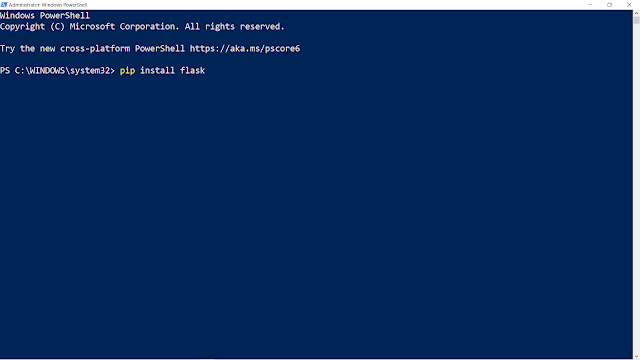learnpython24-(Python Input, Output and Import)
Python Input, Output and Import
This tutorial focuses on two built-in functions print() and input() to perform I/O task in Python. Also, you will learn to import modules and use them in your program.
Python provides numerous built in fuctions that are readily available to us at the Python prompt.
Some of the functions like input() and print() are widely used for standard input and output operations respectively. Let us see the output section first.
Python Output Using print() function
We use the print() function to output data to the standard output device (screen). We can also output data to file, but this will be discussed later.
An example of its use is given below.
print('This sentence is output to the screen')Output
This sentence is output to the screen
Another example is given below:
a = 5
print('The value of a is', a)Output
The value of a is 5
In the second print() statement, we can notice that space was added between the string and the value of variable a. This is by default, but we can change it.
The actual syntax of the print() function is:
print(*objects, sep=' ', end='\n', file=sys.stdout, flush=False)
Here, objects is the value(s) to be printed.
The sep separator is used between the values. It defaults into a space character.
After all values are printed, end is printed. It defaults into a new line.
The file is the object where the values are printed and its default value is sys.stdout (screen). Here is an example to illustrate this.
print(1, 2, 3, 4)
print(1, 2, 3, 4, sep='*')
print(1, 2, 3, 4, sep='#', end='&')Output
1 2 3 4 1*2*3*4 1#2#3#4&
Output formatting
Sometimes we would like to format our output to make it look attractive. This can be done by using the str.format() method. This method is visible to any string object.
>>> x = 5; y = 10
>>> print('The value of x is {} and y is {}'.format(x,y))
The value of x is 5 and y is 10Here, the curly braces {} are used as placeholders. We can specify the order in which they are printed by using numbers (tuple index).
print('I love {0} and {1}'.format('bread','butter'))
print('I love {1} and {0}'.format('bread','butter'))Output
I love bread and butter I love butter and bread
We can even use keyword arguments to format the string.
>>> print('Hello {name}, {greeting}'.format(greeting = 'Goodmorning', name = 'John'))
Hello John, GoodmorningWe can also format strings like the old sprintf() style used in C programming language . We use the % operator to accomplish this.
>>> x = 12.3456789
>>> print('The value of x is %3.2f' %x)
The value of x is 12.35
>>> print('The value of x is %3.4f' %x)
The value of x is 12.3457Python Input
Up until now, our programs were static. The value of variables was defined or hard coded into the source code.
To allow flexibility, we might want to take the input from the user. In Python, we have the input() function to allow this. The syntax for input() is:
input([prompt])
where prompt is the string we wish to display on the screen. It is optional.
>>> num = input('Enter a number: ')
Enter a number: 10
>>> num
'10'Here, we can see that the entered value 10 is a string, not a number. To convert this into a number we can use int() or float() functions.
>>> int('10')
10
>>> float('10')
10.0This same operation can be performed using the eval() function. But eval takes it further. It can evaluate even expressions, provided the input is a string
>>> int('2+3')
Traceback (most recent call last):
File "<string>", line 301, in runcode
File "<interactive input>", line 1, in <module>
ValueError: invalid literal for int() with base 10: '2+3'
>>> eval('2+3')
5Python Import
When our program grows bigger, it is a good idea to break it into different modules.
A module is a file containing Python definitions and statements. python modules have a filename and end with the extension .py.
Definitions inside a module can be imported to another module or the interactive interpreter in Python. We use the import keyword to do this.
For example, we can import the math module by typing the following line:
import mathWe can use the module in the following ways:
import math
print(math.pi)Output
3.141592653589793
Now all the definitions inside math module are available in our scope. We can also import some specific attributes and functions only, using the from keyword. For example:
>>> from math import pi
>>> pi
3.141592653589793While importing a module, Python looks at several places defined in sys.path. It is a list of directory locations.
>>> import sys
>>> sys.path
['',
'C:\\Python33\\Lib\\idlelib',
'C:\\Windows\\system32\\python33.zip',
'C:\\Python33\\DLLs',
'C:\\Python33\\lib',
'C:\\Python33',
'C:\\Python33\\lib\\site-packages']We can also add our own location to this list.

Comments
Post a Comment